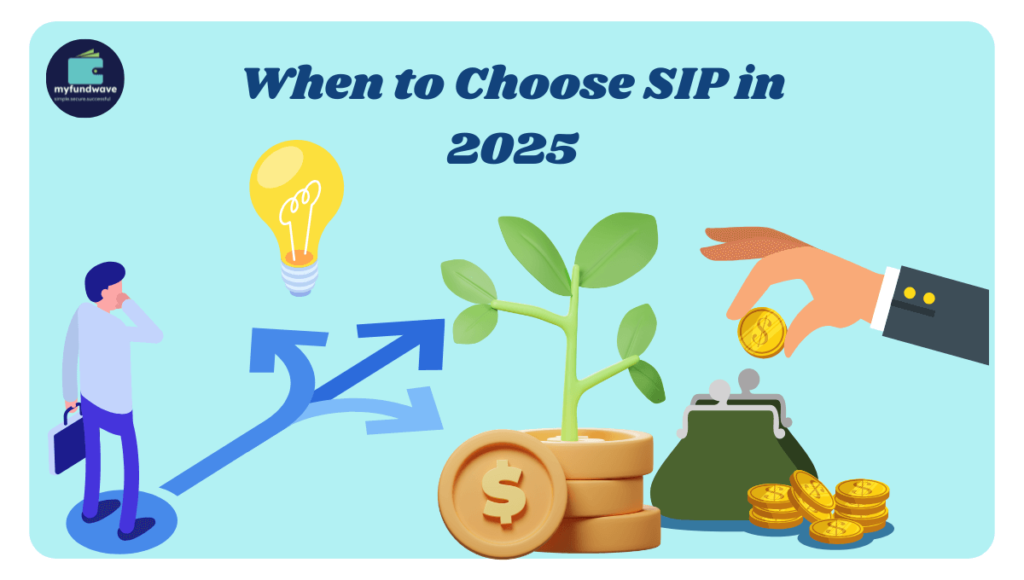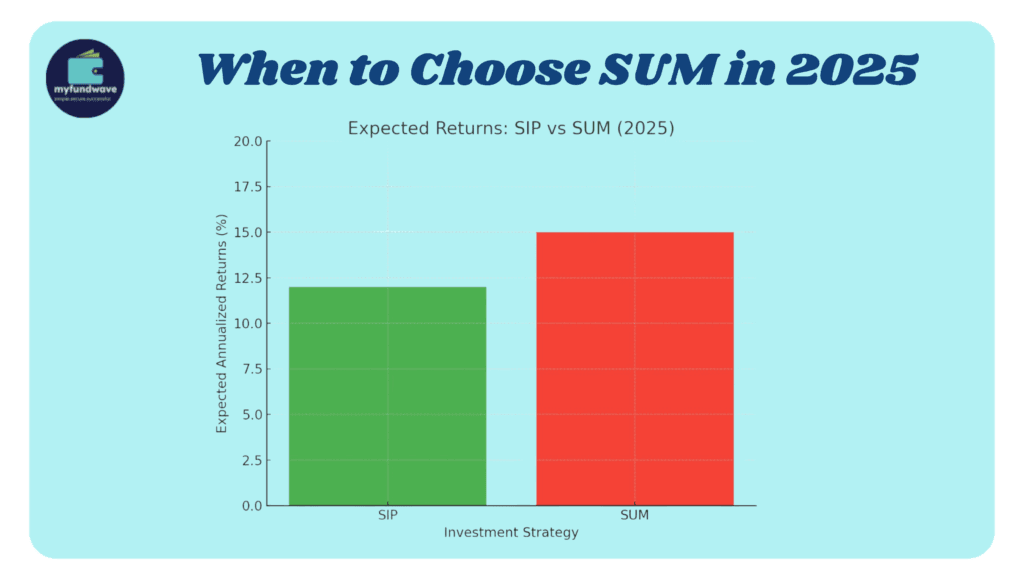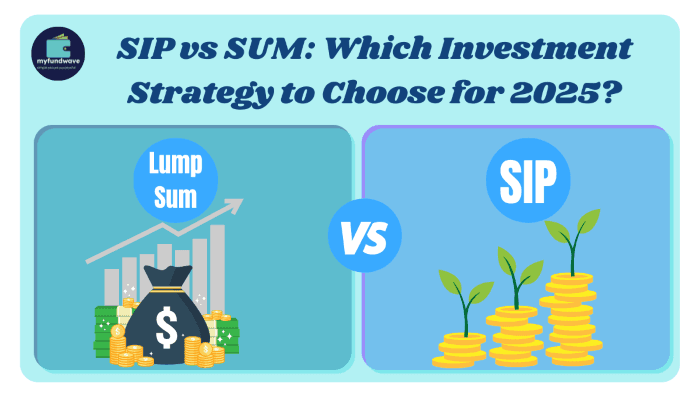
Introduction
As 2025 approaches, investors are eager to identify the best strategies to grow their wealth. Among the many choices, SIP (Systematic Investment Plan) and SUM (Systematic Lump Sum Investment) have emerged as two of the most debated methods. Both these strategies have their merits and demerits, and choosing the right one largely depends on your financial goals, risk appetite, and market conditions. This article will help you decide which investment strategy—SIP vs SUM—is better suited for you in 2025.
Table of Contents
Before diving into their differences, let’s briefly understand what SIP and SUM mean:
- SIP (Systematic Investment Plan):
SIP allows investors to invest a fixed amount of money regularly—typically monthly—into mutual funds or stocks. It promotes disciplined investing and takes advantage of rupee cost averaging, reducing the impact of market volatility. - SUM (Systematic Lump Sum Investment):
SUM involves investing a large amount of money all at once. It is ideal for those who have a surplus of funds and want to capitalize on the market’s upward potential immediately.
Both strategies—SIP vs SUM—have unique features, and the choice between the two depends on multiple factors.
Benefits of SIP

- Rupee Cost Averaging:
SIP enables investors to buy more units when prices are low and fewer when prices are high. This averaging technique minimizes the risk of market timing and provides long-term stability. - Disciplined Investing:
SIP is perfect for salaried individuals or those with regular income. It automates investments, ensuring consistent contributions towards financial goals. - Flexibility:
SIPs allow you to start with a small amount (as low as ₹500 per month). You can increase or stop your SIPs without significant penalties. - Lower Emotional Stress:
SIP eliminates the need to monitor market movements daily, making it less stressful for beginners or risk-averse investors.
Benefits of SUM
- Immediate Capital Deployment:
If the market is in a bullish phase, investing a lump sum ensures your entire capital benefits from the upward trend. - No Regular Commitment:
SUM is ideal for those who receive windfall gains, bonuses, or inheritances and do not want to commit to monthly investments. - Higher Returns in Bull Markets:
In a rising market, SUM can generate higher returns compared to SIP because the entire amount is exposed to market growth from the outset.
Market Outlook

To determine whether SIP or SUM is the better strategy for 2025, understanding the market outlook is crucial. Analysts predict that global markets may face volatility due to geopolitical uncertainties and interest rate adjustments. However, emerging markets like India are expected to show resilience and moderate growth.
In such scenarios, SIP stands out as a safer option for most investors. Its ability to mitigate risks during volatile markets and provide stable returns over the long term makes it a preferred choice. On the other hand, if you anticipate a bullish market phase or have insider knowledge about specific growth sectors, SUM could be lucrative.
When to Choose SIP

- Volatile Markets:
If you expect frequent market ups and downs, SIP ensures your investments are less affected by short-term volatility. - Limited Funds:
For those with a steady monthly income but limited savings, SIP allows you to build wealth gradually. - Long-Term Goals:
SIP is excellent for long-term objectives like retirement planning, children’s education, or buying a house.
When to Choose SUM

- Bullish Markets:
If you are confident about a strong market rally, SUM ensures you maximize returns from the beginning. - Availability of Lump Sum Funds:
Investors who receive bonuses, inheritances, or other large cash inflows can use SUM to grow their wealth quickly. - Short-Term Goals:
If your financial goals are within a 1–3 year horizon, SUM might yield better returns if the market conditions are favorable.
Conclusion
The choice between SIP vs SUM ultimately depends on your financial situation, market outlook, and investment goals. If you are a risk-averse investor or new to investing, SIP provides a stable and stress-free way to grow your wealth. On the other hand, if you have a surplus of funds and are confident about market growth, SUM might be the better option.
For most investors in 2025, SIP seems to be the safer and more effective choice, given the predicted market volatility. However, combining both strategies can provide the best of both worlds. Analyze your financial needs, consult with a financial advisor if necessary, and choose the path that aligns with your aspirations.
By evaluating the advantages of SIP vs SUM and aligning them with your goals, you can make an informed decision and set yourself on the path to financial success in 2025.











